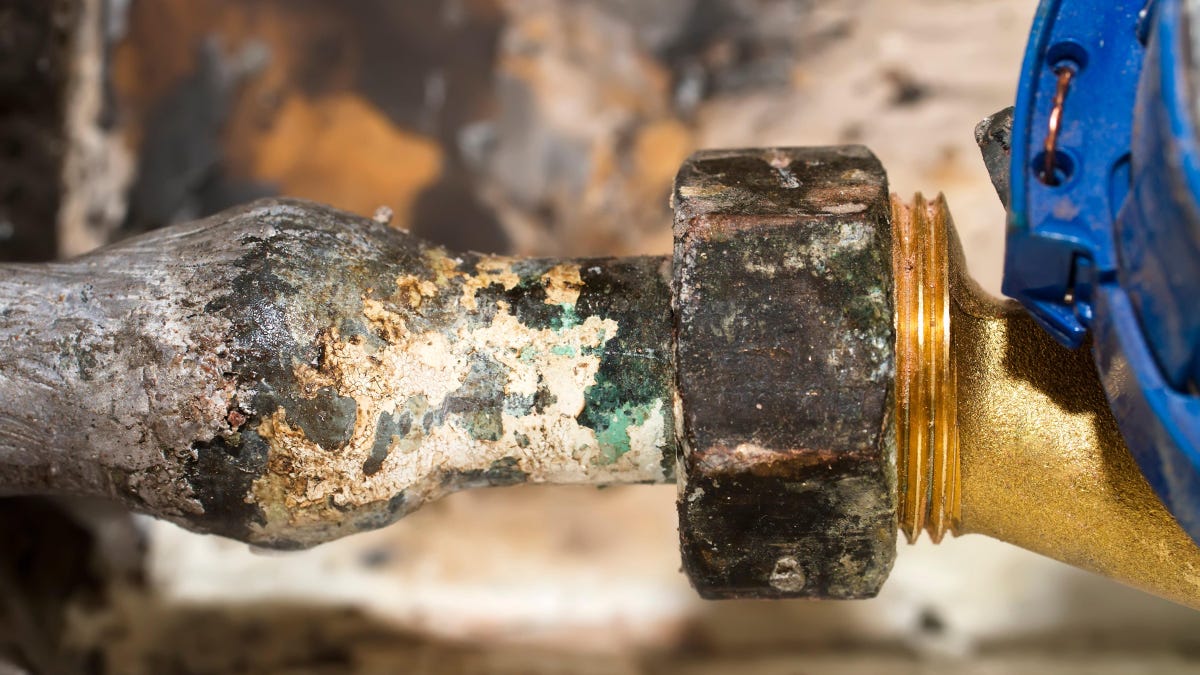How to Know If You Have Lead Pipes

Although a law banning the installation of lead pipes in the United States went into effect in 1988 , many homes across the country still have plumbing fixtures that may contain lead. So how can you tell if yours is one of them? Here’s what you need to know about lead pipes and how to find out if your home has them.
Why are lead pipes dangerous?
For those with city water, their plumbing is the pipe that carries water from the mains (much larger pipes that usually run under the street) to their home.
While several household plumbing components, including faucets, fittings, and solder, may contain some lead, plumbing pipes made from lead are most responsible for the naturally occurring metal found in household drinking water . Defense Council (NRDC).
When was lead pipe banned in the US?
Before we get to the test, let’s talk about some key dates. In 1986, Congress amended the Safe Drinking Water Act in order to prohibit the use of lead pipes in the repair or installation of any public water system or any plumbing installation that provides water for human consumption.
The law went into effect in June 1988 , so if your house was built after that with a new water line, you’re probably safe. If your home was built and/or connected to city water before 1988, your pipes may contain lead, although this is not a guarantee as they may have since been replaced or a different type of pipe may have been originally used.
How to tell if you have lead pipes
Most domestic plumbing systems are made from lead, copper, galvanized steel, or plastic. Here’s how to determine what type you have:
Find your water line
A water line is the entry point for water into a home, usually located in a basement or basement and leading to an inlet valve and a water meter. The configurations for this setup may vary, but here are two visuals that might help:
AND:
Perform a scratch and stick test
Once you’ve found your water line, take a look at it. If this is clearly plastic, then you have found the answer – no need to continue. But if it’s some kind of metal, take a screwdriver (or something similar) and a magnet (one from the fridge will do).
Use a screwdriver to scratch any dirt or corrosion that may have formed on the pipe. Pay attention to the color of the exposed part of the pipe and see if the magnet sticks. Here’s what the results mean :
- Lead : The pipe was soft and easy to clean; scraping shiny and silvery; the magnet does not stick to the pipe
- Galvanized steel : Dull grey, deburred area; magnet sticks to pipe
- Copper : Penny-colored brushed area; magnet does not stick
What to do if your plumbing is clogged
If you find that your plumbing is made of lead, take a photo of it and send it to your city or city water department or any other water authority in your area (this could be the health department in areas where there is no city water supply) . . They will most likely send an expert to review your results and then add you to their list of homes that need line replacements.
Your water or health department will likely also give you advice on how to be as safe as possible while waiting for your new water line. Either way, here are some tips from the Environmental Protection Agency .